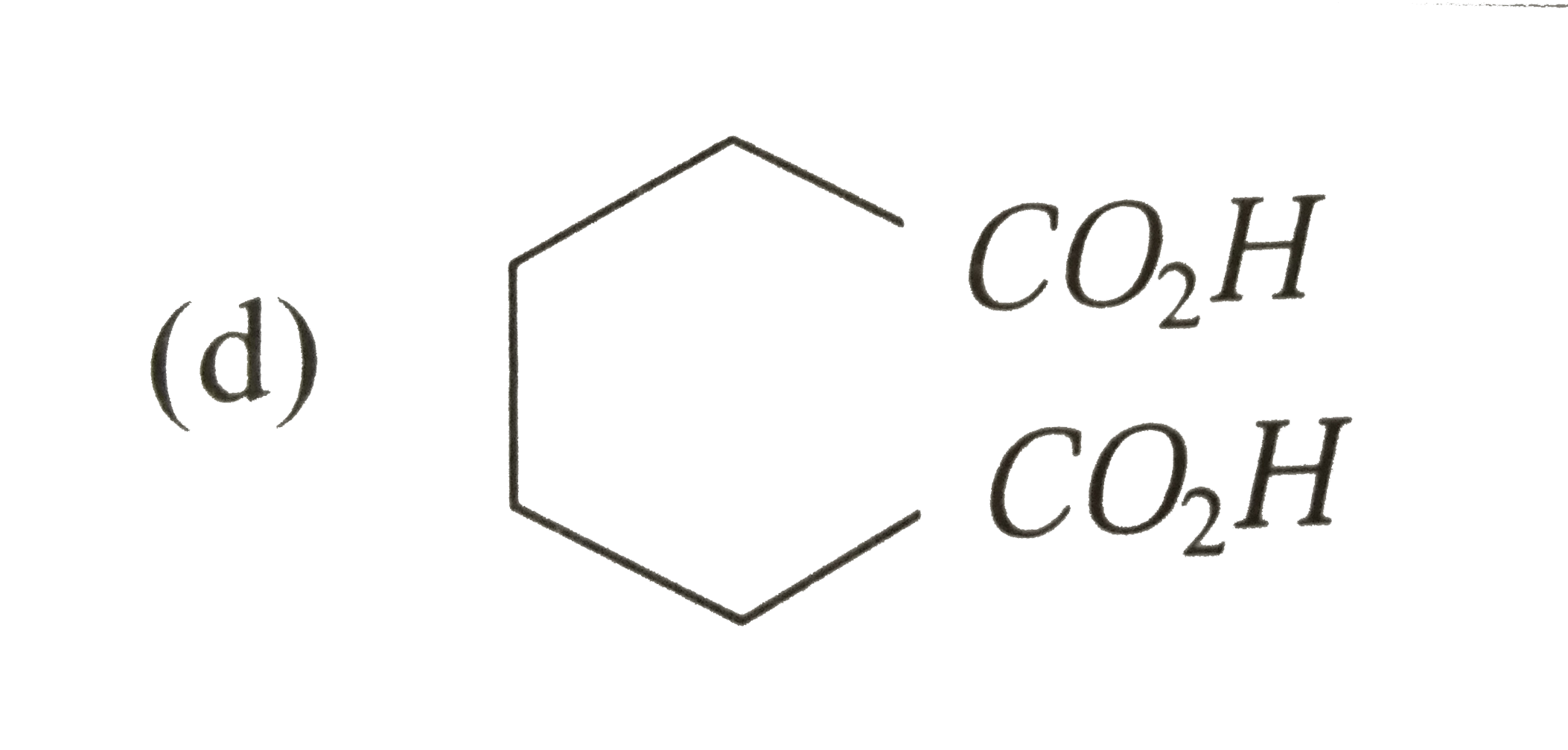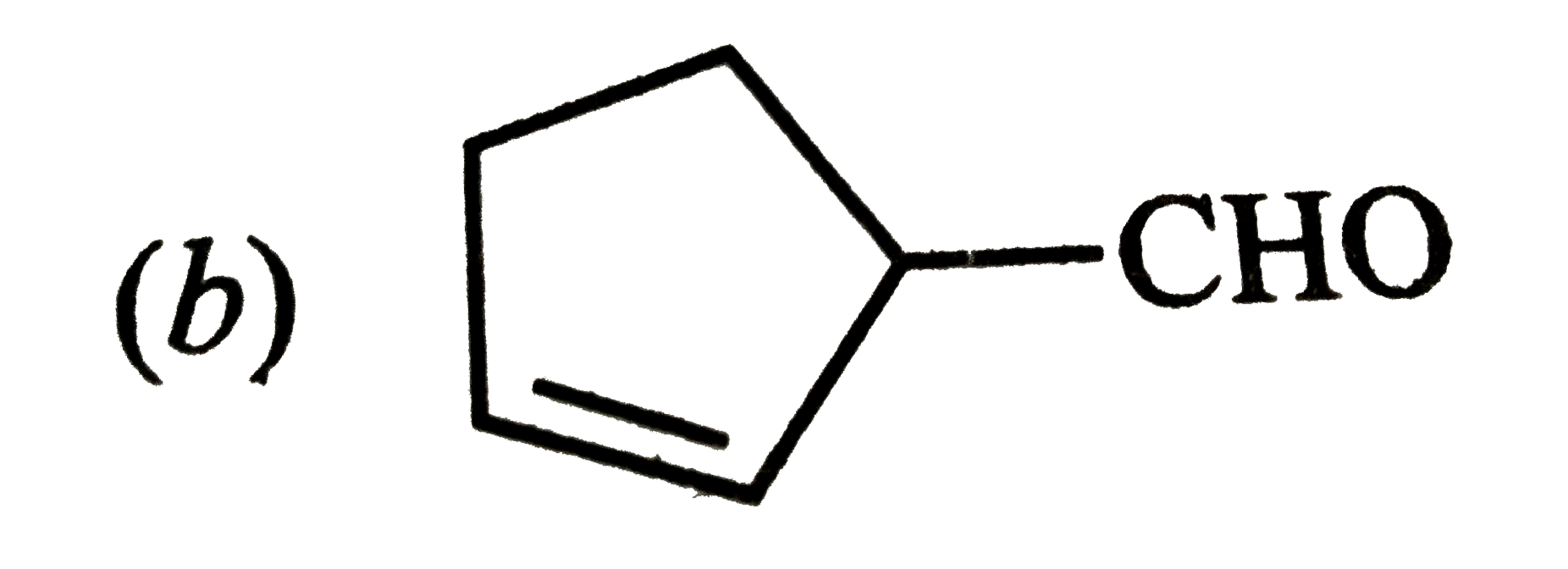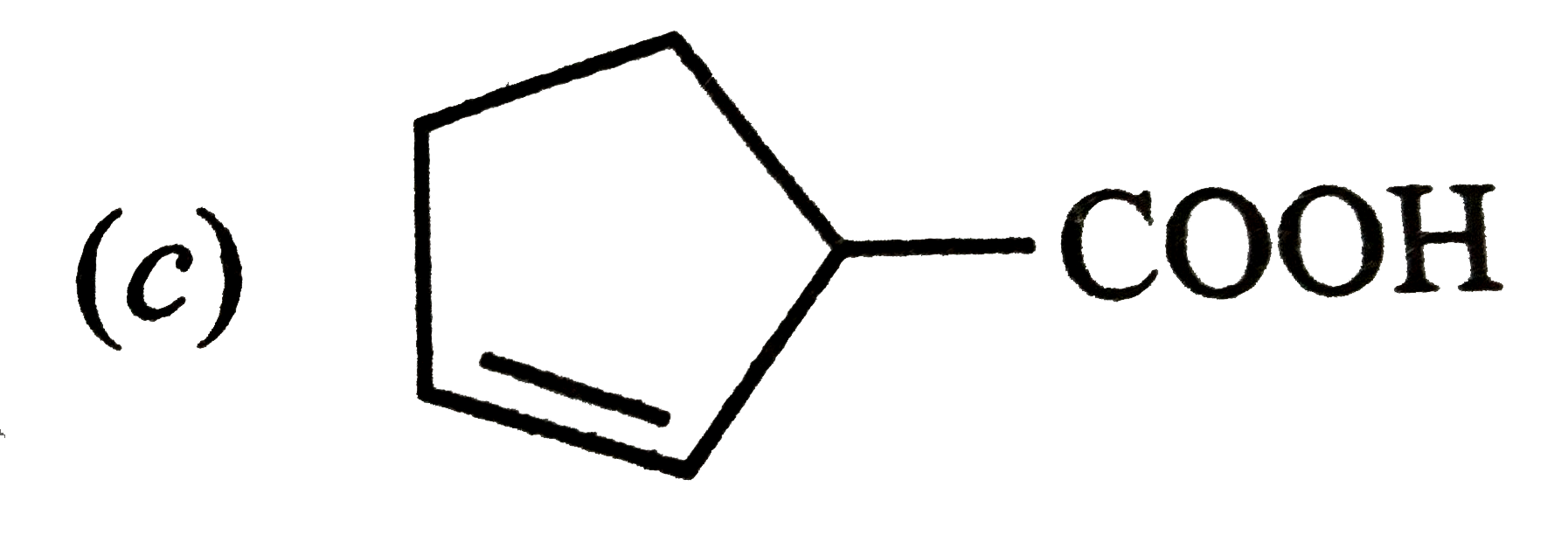Cyclohexene on ozonolysis followed by reaction with zinc dust and water gives compound E. Compound E on furhter treatment with aqueous KOH yields compound F. Compound F is




The correct Answer is:A
To solve the problem step by step, we will analyze the reactions involving cyclohexene, ozonolysis, and subsequent reactions with zinc dust, water, and aqueous KOH.
Step 1: Ozonolysis of Cyclohexene
Cyclohexene (C6H10) undergoes ozonolysis, which involves the cleavage of the double bond (C=C) and the formation of carbonyl groups (C=O).
Reaction:
- The double bond in cyclohexene breaks, and two carbonyl groups are formed.
- The structure of cyclohexene is as follows:
HH C/CCHH
- After ozonolysis, we get two carbonyl groups at the ends of the molecule, leading to the formation of a diketone.
Product E:
The product E is 2,3-hexanedione (C6H10O2).
Step 2: Reaction of Compound E with Zinc Dust and Water
The next step involves treating the diketone (compound E) with zinc dust and water. This reaction is a reductive workup that converts the diketone into an alcohol.
Reaction:
- The diketone is reduced to a diol (specifically a 1,2-diol).
- The structure of compound E (2,3-hexanedione) after reduction becomes:
OHOH C−CCCHH
Product E:
The product E is 2,3-hexanediol (C6H12O2).
Step 3: Treatment of Compound E with Aqueous KOH
Now, we treat the diol (compound E) with aqueous KOH. This leads to an intramolecular aldol condensation because the molecule contains two carbonyl groups.
Reaction:
- The hydroxide ion (OH-) abstracts an alpha hydrogen from one of the hydroxyl groups, forming an enolate ion.
- This enolate ion then attacks the carbonyl carbon of the other carbonyl group, forming a cyclic intermediate.
- After dehydration (loss of water), we obtain a conjugated system.
Final Product F:
The final product F is 2-hexenal (C6H10O), which is an α,β-unsaturated aldehyde.
Summary of Products:
- Compound E: 2,3-hexanediol (C6H12O2)
- Compound F: 2-hexenal (C6H10O)
Final Answer:
Compound F is 2-hexenal.
---
Cyclohexene (C6H10) undergoes ozonolysis, which involves the cleavage of the double bond (C=C) and the formation of carbonyl groups (C=O).
- The double bond in cyclohexene breaks, and two carbonyl groups are formed.
- The structure of cyclohexene is as follows:
The product E is 2,3-hexanedione (C6H10O2).
The next step involves treating the diketone (compound E) with zinc dust and water. This reaction is a reductive workup that converts the diketone into an alcohol.
- The diketone is reduced to a diol (specifically a 1,2-diol).
- The structure of compound E (2,3-hexanedione) after reduction becomes:
The product E is 2,3-hexanediol (C6H12O2).
Now, we treat the diol (compound E) with aqueous KOH. This leads to an intramolecular aldol condensation because the molecule contains two carbonyl groups.
- The hydroxide ion (OH-) abstracts an alpha hydrogen from one of the hydroxyl groups, forming an enolate ion.
- This enolate ion then attacks the carbonyl carbon of the other carbonyl group, forming a cyclic intermediate.
- After dehydration (loss of water), we obtain a conjugated system.
The final product F is 2-hexenal (C6H10O), which is an α,β-unsaturated aldehyde.
- Compound E: 2,3-hexanediol (C6H12O2)
- Compound F: 2-hexenal (C6H10O)
Compound F is 2-hexenal.
Topper's Solved these Questions
- ALDEHYDES AND KETONESBOOK - IIT-JEE PREVIOUS YEAR (CHEMISTRY)CHAPTER - ALDEHYDES AND KETONESEXERCISE - Integer Answere Type Questions
1 Videos
- ALCOHOLS AND ETHERSBOOK - IIT-JEE PREVIOUS YEAR (CHEMISTRY)CHAPTER - ALCOHOLS AND ETHERSEXERCISE - Test
5 Videos
- ALIPHATIC COMPOUNDS CONTAINING NITROGENBOOK - IIT-JEE PREVIOUS YEAR (CHEMISTRY)CHAPTER - ALIPHATIC COMPOUNDS CONTAINING NITROGENEXERCISE - chpter test
1 Videos
Similar Questions
A compound (A) C5H9Br on treatment with Mg in dry ether gives a compound (B) which on reaction with acetaldehyde gives an alcohol (C), on mild acidification prolonged treatment of alcohol with equivalent amount of HBr gives a compound (D) which on reaction with alcoholic KOH gives compound (E). compound (E) on ozonolysis followed by treatment with H2∅Zn gives (F). the compound (F) on treatment with base gives 1 acetyl cyclopentene (G). identify (A) to (G).
View SolutionCyclohexane on ozonolysis followed by reaction with zinc dust and water gives compound E, on further treatment with aqueous KOH followed by heating yields compound F. The compound F is
View Solution
Knowledge Check
Cyclohexene on ozonolysis followed by reaction with zinc dust and water gives compound E. Compound E on furhter treatment with aqueous KOH yields compound F. Compound F is
A B
B C
C D
D
Cyclohexene on ozonolysis followed by reaction with zinc dust and water gives compound E. Compound E on furhter treatment with aqueous KOH yields compound F. Compound F is
A B
B C
C D
D
Cyclohexane on ozonolysis followed by reaction with zinc dust and water gives compound E . Compound E on further treatment with aq.KOH yields compound F compound F is
A B
B C
C D
D
The compound that forms racemic products on reaction with aqueous KOH is
View SolutionA tertiary alcohol (H) upon acid-catalysed dehydration gives a product (I). Ozonolysis of (I) leads to compounds (J) and (K). Compound (J) upon reaction with KOH gives benzyl alcohol and a compound (L), whereas (K) on reaction with KOH gives only (M).

The structurer of compound (I) is:
View SolutionA hydrocarbon (X) of the formula C6H12 does not react with bromine water but reacts with bromine in presence of light, forming compound (Y).Compound (Y) on treatment with Alc. KOH gives compound (Z) which on ozonolysis gives (T) reduces Tollens reagent which gives compound (W) after acidification . (W) gives iodoform test and after acidification produce compound (U) which when heated with P2O5 forms a cyclic anhydride (V).
Compound W is
View SolutionA hydrocarbon (X) of the formula C6H12 does not react with bromine water but reacts with bromine in presence of light, forming compound (Y).Compound (Y) on treatment with Alc. KOH gives compound (Z) which on ozonolysis gives (T) reduces Tollens reagent which gives compound (W) after acidification . (W) gives iodoform test and after acidification produce compound (U) which when heated with P2O5 forms a cyclic anhydride (V).
Compound V is
View SolutionA hydrocarbon (X) of the formula C6H12 does not react with bromine water but reacts with bromine in presence of light, forming compound (Y).Compound (Y) on treatment with Alc. KOH gives compound (Z) which on ozonolysis gives (T) reduces Tollens reagent which gives compound (W) after acidification . (W) gives iodoform test and after acidification produce compound (U) which when heated with P2O5 forms a cyclic anhydride (V).
Compound 'x' is
View Solution
